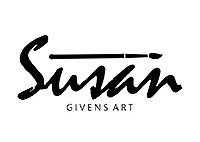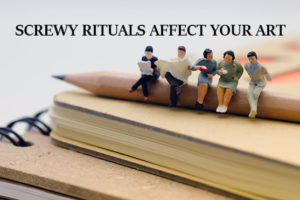There is nothing glamorous about being a self-taught artist. In a perfect world, I would love to be taught by some of the great masters of drawing and painting at a top school.
On the flip side, however, I would prefer to be a self-taught artist over going to an art school which does not teach art as if it were a trainable skill.
As a self-taught artist, you will have a tough but rewarding road ahead. You will not have the structure or guidance provided by a top art school, however, you will have the freedom to learn how you please.
If you are disciplined, then you can achieve anything as a self-taught artist that a trained artist could achieve. In fact, formal art training can be restrictive to the learning of some artists, who may be better suited to the self-taught path.
Some of the great masters of painting were self-taught, including:
Albert Dorne — mostly self-taught.
Vincent VanGogh — studied art briefly at the Antwerp Academy, but this had little influence on his approach to painting.
Paul Gauguin — was a sailor and stockbroker before he began painting.
Charles M. Russell — no training at all.
James McNeill Whistler — mostly self-taught.
Winslow Homer — no formal art training.

Winslow Homer, Artists Sketching in the White Mountains, 1868
So, if you are on the self-taught journey as an artist, here are 7 tips to help you.
1. Be your own worst critic
It can be easy to put on rose-colored glasses when viewing your own work. But in order to actually learn and improve, you need to learn how to judge your art in an unbiased and critical manner.
If on the other hand, you are your own biggest fan, you will never identify any weaknesses or areas to improve on.
If you feel your ego is getting in the way of your learning, then put yourself out there and submit your work to competitions and galleries. You may be quickly humbled.
2. Expect nothing, but aim for everything
If you expect too much as a self-taught artist then you will quickly be discouraged if it doesn’t go your way. Being an artist is hard enough as it is even with formal training.
However, it is also important that you have an almost unbound optimism. You should be aiming to achieve whatever you desire.
This is what drives you forward. You may not achieve everything. In fact, you should certainly not achieve everything you desired.
If you have, then you probably did not dream big enough.
3. Copy the masters
Sometimes the best way to study the techniques and processes of the great masters is to just try and copy their works. This will give you a better understanding of the problems they faced, the strokes they made, the colors they selected and their overall approach to art.
The objective of copying master artworks is not to try and replicate them, but rather to get a feel for how the artist worked.
This should only form a small part of your studies though, as it is important you develop your own style.
4. Consistency is key
If you want to be a successful self-taught artist, then it is important that you simply put the hours in. Unfortunately, this is the hardest part about being self-taught.
Most of you will have day jobs and other hobbies. You do not have the luxury of studying for 7 hours a day at art school.
You will need to find the time when you can. Optimally, you should have regular sessions throughout the week. These do not need to be long sessions, but they should be focused and scheduled.
You need to seclude yourself from the world and make those sessions count. Put on some music and tune out the rest of the world. Half an hour of solid practice is much more effective than 7 hours of wavered practice.
A common pitfall for self-taught artists is waiting for that perfect time to practice (which as you will find never comes). You will just need to make do sometimes.
One of the best changes I made was to incorporate small paintings into my training and aim to complete them in just one session. This is the complete opposite to spending weeks trying to finish a huge studio piece, which often will just end up being unfinished in storage.
Small and quick paintings will keep your inspiration fresh and will make sure you do not get bogged down on a larger piece.
A great book which is based on this idea is Carol Marine’s “Daily Painting: Paint Small and Often to Become a More Creative, Productive, and Successful Artist”. A recommended read for all artists.

5. Don’t compare yourself to others
When you are not surrounded by other studying artists, you may find that you end up comparing yourself to very established professional artists (generally those whom you discover on the internet). What you need to realize is that all professional artists were amateurs at one stage.
Look at the professionals for inspiration, but do not compare yourself to them. Only focus on yourself and how you can improve. That is all that matters.
6. Document everything
I am a firm believer that you should document everything you do, even when you are in the early stages. There may be a time when your early works will be very significant to you.
When you observe your artworks as a collective group, you may be able to identify any areas of weakness that you may not have been able to identify from an individual piece.
For example, when looking at a group of my recent paintings I noticed they are generally much more saturated (colorful) than a group of my earlier paintings. This is because in my earlier paintings I was using too much white. I was not able to identify this issue from the individual paintings.
I find social media can actually be a great way to keep a record of your activity as an artist. It can act as your own storyline which highlights your progression.
7. Take part in the art community
Unfortunately, nothing comes close to the community of being in an art school. The next best option is voluntary involvement in the art community through competitions, exhibitions, art demonstrations, and online forums.
If you get actively involved in the art community then you will not feel so disadvantaged from not going to art school.
Curated from Dan Scott’s article “7 Tips for the Self-Taught Artist”




